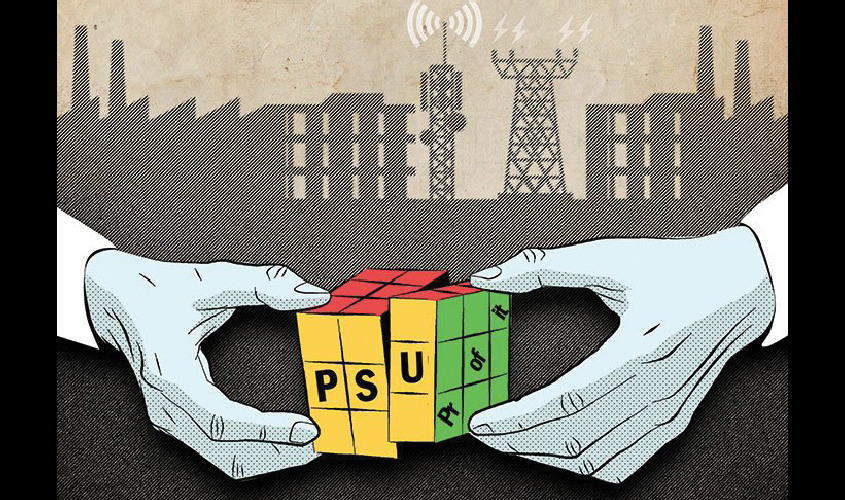Abstract
The Indian economic framework immediately after independence followed a state-centred growth model. The government strictly regulated the entry of private entities into the market. This was detrimental to market competition leading to both government and private monopolies. Only a few business houses managed to thrive in an over-regulated environment, the ones that enjoyed a symbiotic relationship with the government. Nationalisations in the 1960s gave an ideological colour to the previous policy of command economy. Pro-poor tilt in distributional policies led to hostility towards private enterprises. State-led growth was not without its flaws. The paper examines the macroeconomic conditions which led the government to adopt disinvestment policies. Various policy changes since 1991 and their emphasis on disinvestment have been highlighted. Different approaches were followed by other governments based on a consideration of multiple factors. The disinvestment pattern for Air India was very different from the approach adopted for ONGC.
A comparison of the disinvestment policies of India post-1991 with other emerging economies is done. East Europe’s shock therapy and Zambia’s case were examined as useful lessons for the Indian disinvestment policies. United Kingdom’s Private finance Initiative provided a useful experience in the adoption of these policies. This is because it was one of the first countries to privatize welfare services. Based on an international comparison, there were various institutional and political constraints in the implementation of disinvestment policies. Institutional constraints are related to the administrative inadequacies to cope up with the radical restructuring of the state led economy while political constraints refer to the ideological opposition to the entire process. Based on this analysis, various recommendations are provided to deal with these constraints. Improvement of valuation methods, joint ventures, employee-management buyouts and establishment of procurement agency are some of the recommendations.
Keywords: Strategic sale, public offer, disinvestment, non-core assets, employee-management buyouts
Introduction
Disinvestment refers to the process through which government sells minority stakes in Public Sector Undertakings (PSU) and various other assets owned by the government. The objective of disinvestment is to reduce the fiscal burden of the government and enhance efficiency of PSUs. Privatization, on the other hand refers to sale of majority stake of the government to private entities. India’s first disinvestment was set up in 1996 during the tenure of Atal Behari Vajpayee under the chairmanship of GV Ramakrishna.
Naresh Chandra committee report recommended the privatization of Air India. This was seconded by the recommendation of the Ministry of Corporate Affairs which called for partial privatization. This was due to the losses worth Rs. 1.74 billion in 1998-99. The government has sold a 76% stake in Air India Ltd., 100% stake in Air India Express Ltd and a 50% stake in Air India SATS Airport Services Pvt. Ltd. Despite the merger of Air India and Indian Airlines, the losses did not stop accumulating. However, the disinvestment in Air India and other Public Sector Undertakings was never an easy policy decision because it involved a shift in ownership of a national symbol. In contrast to the case of Air India, the disinvestment in Life Insurance Corporation (LIC) was a minority disinvestment. In this case, the majority of stakes shall remain with the government. After the amendment of the LIC Act, the possibility of Foreign Direct Investment through Initial Public Offering was high.
After Economic reforms in 1991, successive governments have continued the policy of disinvestment or reducing government shares in Public Sector Undertakings. Strategic disinvestment refers to sale of a substantial portion of the government’s stakes along with the transfer of managerial control to the acquiring company. Out of Rs. 4.2 Lakh crores raised from disinvestment in the last 10 years, 3.15 Lakh crores have been through the sale of minority stakes while only 70,000 crores have been raised through strategic transactions. After 2010, the government has not been able to meet its disinvestment targets barring 2017-18 and 2018-19. A case in point is not meeting its ambitious disinvestment target of 1.75 Lakh crore in 2021-22 despite the sale of Air India.
India’s command economy and need for disinvestment
Command economy
The pursuit of self-reliance was a determining factor in the socialist tilt of Indian economic policies. The Indian economy was marked by the ‘Hindu Rate of Growth.’ It was a shorthand for staggered growth rates due to the command economy and the central role played by the state in structuring the economy. Public investment in non-critical sectors like hotels, real estate and restaurants led to the elimination of effective competition. Dreze and Sen (1999) pointed out state failure in terms of removing poverty, inequality and disease. They diagnosed excessive bureaucracy and state interventionism as the root cause of inefficiency of the economy. There were rent-seeking tendencies among politicians and bureaucrats. The role of planning commission had been elevated to the status of a super-cabinet. It emphasized the socialist pattern of society which was associated with state ownership of productive assets. The number of Central Public Undertakings rose from 5 in 1951-52 to 243 in 1998-99.
It was soon realized that the state did not have the institutional capacity and the economic resources to give effect to its socialist goals. To fulfil the twin developmental imperatives of building national power and rapid economic development involved a tacit developmental alliance with the industrial classes. By protecting from market volatility to the private sector, the state facilitated the process of converting these firms’ narrow capitalist incentives into a powerful social force. The lack of industrial base and financial capital for the private sector, also called the lumpiness problem, was solved through the provision of state infrastructure to select private entities. In the decade after independence, the 20 largest business houses in India controlled 30% of corporate assets. By 1976, this number had gone up to 65% .
Financial Position before 1991
The Gulf War and oil shock exacerbated India’s balance of payments problem. India’s foreign exchange reserves were only enough to last for 2 weeks. The Inflation rate had breached the 10% mark which is well above Reserve Bank of India’s prescribed limits. The total investment in Central Public Sector enterprise was 99,315 crore. Out of the 244 CPSEs, 98 had accumulated losses in excess of 10,000 crore. The reason for loss-making was the inability of the government to transform the erstwhile sick industries into profitable enterprises. A primary reason behind the decline of PSUs was the stagnation of investment. Investment in Public Sector Undertakings remained the same in 1976 and 1990 at around 8%. The logic underlying PSU’s operation was that despite capital scarcity, there should be attempts to maximize employment. During the same period, employment increased from 6.6 lakhs to 22.2 lakhs.
Click Here To Download The Paper


📌Analysis of Bills and Acts
📌 Summary of Reports from Government Agencies
📌 Analysis of Election Manifestos

